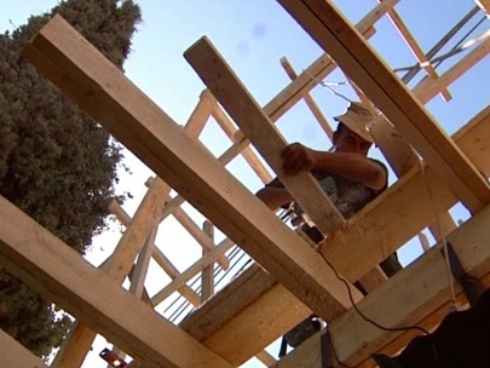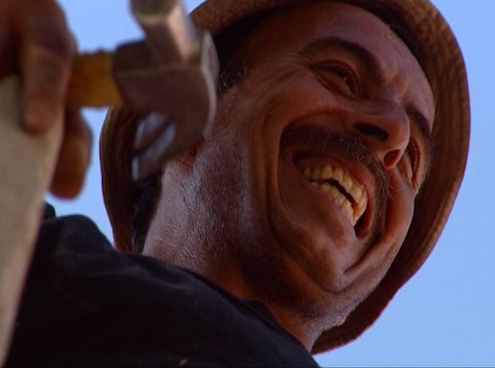News from Home/News from House
Full Description
For director Amos Gitai, metaphors can be concrete--or more precisely, hewed stone, in the case of his 25-year-long trilogy of films documenting the stories contained in one West Jerusalem stone house. In this moving, concluding chapter of the project that he began in 1980 with House, Gitai widens his view from the pretty multi-storied building to take in whole diasporas, tracking down descendants of the Dajani family, the original inhabitants of the house who were forced to scatter in 1948. An affluent Arab family now living in Canada, Jordan, Lebanon and throughout the Persian Gulf, the Dajanis speak with both bitterness and resignation about the historical tides that swept them out of Jerusalem. But in Gitai’s view of the region, the Dajanis are just one set of displaced people with claims to the house. We also meet Claire Cesari, the current owner, a Jewish liberal raised in Turkey. Her family, too, has been battered by history’s storms and has found refuge, however tenuous, in Jerusalem. And we catch up with Mohamad Said el Arj, the Palestinian construction worker first seen in House, whose large family is currently caught in the conflict over homeland. Never losing its human focus, News from Home/News from House finds in the stories of the house an extraordinary microcosm of the region. Refusing to oversimplify, Gitai, like a good archaeologist, finds the shards and fragments of overlapping lives that inevitably cannot be separated.
Note: House and News from Home/News from House may be viewed in any order.
Filmmaker Bio(s)
For over 20 years, Amos Gitai has brought to the screen images of the Jewish Diaspora and Israeli life alike. Employing both documentary and fictional styles, Gitais uses the camera to reveal history in all its contradictions and ambivalence.
He challenges us, the audience, to scrutinize history anew. Using landscape as a pictorical reference, Gitai traverses time and space to posit not merely a personal experience but a universal one that speaks of migration, struggle and alienation.
In 1973, during the Yom Kippur War, a Red Cross helicopter Gitai was in was shot down by Syrian forces. Following this, Gitai began using his camera as a means of recording and questioning the historical and political events around him. Both his documentaries and his dramatic films present a brutally honest reality, one bejeweled with political conflict, personal plight and a search for meaning. It is a reality that we recognize both as individuals and as members of the larger society.
Amos Gitai was born in Haifa in 1950. Between 1971 and 1975, Amos Gitai studied architecture in the Israel Institute of Technology, and also created his first 8- and 16-mm films. He continued his architecture studies at the University of California in Berkeley where he specialized in the theory of vernacular architecture, and received his Ph.D. in 1986.
In 1977 he began working for Israeli television, where he made several documentaries. After two of his films, Political Myths and House, were censored by the TV authorities, and when Field Diary, shot shortly before and during the Lebanon War, met with much hostility, Gitai moved in 1982, to Paris. From Paris, Gitai continued studying themes of exile, emigration and geography, creating films exceeding the bounds of traditional genre defitions of narrative.
Director(s)
Country(ies)
Language(s)
Release Year
Festival Year(s)
Running Time
97



